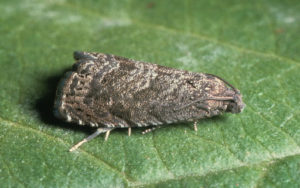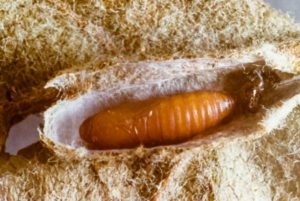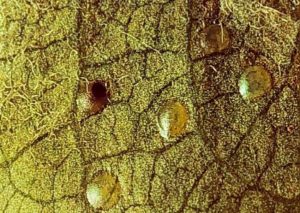Oriental Fruit Moth (Grapholita molesta)
The oriental fruit moth is a member of the family of tortrix moths. Danish-American entomologist Augustus Busck first discovered this species in 1916.
cloudfront.net
Scientific Classification
- Family: Tortricidae
- Genus: Grapholita
- Scientific Name: Grapholita molesta
Description and Identification
Caterpillar
The larvae directly bore into the fruit’s interior, causing immense damage that may eventually result in rotting. Initially, the larvae are cream or white, with a black head. When mature, they become pinkish or creamy-white, their head turning brown. It is 8-13 mm in length.
The larvae directly bore into the fruit’s interior, causing immense damage that may eventually result in rotting.
Adult Moth
Sexual Dimorphism: Present but not prominent.
Color and Appearance
They are gray and 5 mm in length.
When the wings are open, they have a salt-and-pepper appearance due to the light and dark bands present on them. When closed, the patterns remain visible.
Average wingspan: 13 mm
Flight pattern: Erratic
Season: Early June to mid-July
Quick Facts
| Other names | Peach moth |
| Distribution | Native: China Invasive: Worldwide, including Asia(mainly Japan), Australia, Europe, North and South America, New Zealand, Hawaii, Mauritius, Morocco, and South Africa |
| Habitat | Fruit growing regions |
| Lifespan of Adults | Not recorded |
| Host Plants | Primarily peach and nectarine; also apple, apricot, cherry, flowering cherry, pear, plum, quince, and rose |
| Adult Diet | Does not feed |
Did You Know
- The oriental fruit moth larvae are often confused with the codling moth due to certain similarities. The main distinguishing feature is the anal comb present in the former and absent in the latter.
Scientific Classification
- Family: Tortricidae
- Genus: Grapholita
- Scientific Name: Grapholita molesta







